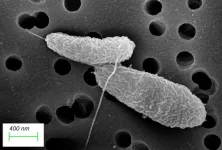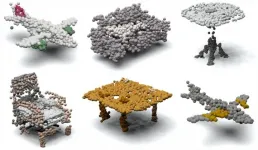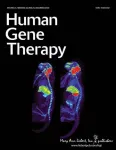INFORMATION:
The study was partly funded by the Biotechnology and Biological Sciences Research Council (BBSRC), with additional funding and support from Lyons Seafoods.
The paper, published in the journal PLOS Pathogens, is entitled: "Bacterial dormancy: a subpopulation of viable but non-culturable cells demonstrates better fitness for revival."
Breakthrough in understanding 'tummy bug' bacteria
2021-01-20
(Press-News.org) Scientists have discovered how bacteria commonly responsible for seafood-related stomach upsets can go dormant and then "wake up".
Vibrio parahaemolyticus is a marine bacterium that can cause gastroenteritis in humans when eaten in raw or undercooked shellfish such as oysters and mussels.
Some of these bacteria are able to turn dormant in poor growth conditions such as cold temperatures - and can remain in that state of hibernation for long periods before resuscitating.
University of Exeter scientists have identified a population of these dormant cells that are better at waking up, and have discovered an enzyme involved in that waking up process.
"Most of these bacteria die when they encounter poor growth conditions, but we identified sub-populations of bacteria that are able to stay dormant for long periods of time," said lead author Dr Sariqa Wagley, of the University of Exeter.
"We found that this population has a better ability to revive when conditions improve.
"Our tests show that when these dormant bacteria are revived they are just as virulent and able to cause disease."
The findings could have implications for seafood safety, as dormant cells are not detectable using routine microbiological screening tests and the true bacterial load (amount of bacteria) could be underestimated.
"When they go dormant, these bacteria change shape, reduce respiration activities and they don't grow like healthy bacteria on agar plates used in standard laboratory tests, so they are much harder to detect," Dr Wagley explained.
"Using a range of tools, we were able to find dormant bacteria in seafood samples and laboratory cultures and look at their genetic content to look for clues in how they might survive for long periods.
"It is important to note that thorough cooking kills bacteria in seafood.
"Our results may also help us predict the conditions that dormant bacteria need in order to revive."
Working with the seafood industry, the Exeter team identified a lactate dehydrogenase enzyme that breaks down lactic acid into pyruvate, a key component of several metabolic pathways (chemical reactions in a cell).
The findings suggest that lactate dehydrogenase is essential both for maintaining bacterial dormancy and resuscitation back to an active form.
Vibrio parahaemolyticus usually grows in warm and tropical marine environments, although Dr Wagley said that due to rising sea temperatures in recent years it is now prevalent in UK waters during the summer months.
During the winter, it is not detected in the marine environment around the UK and it is thought to die due to the cold winter temperatures.
This study could explain how Vibrio parahaemolyticus is able remerge in the environment during the summer.
ELSE PRESS RELEASES FROM THIS DATE:
New Parkinson's disease therapeutics discovered by Ben-Gurion U researchers
2021-01-20
BEER-SHEVA, Israel...January 20, 2021 -Ben-Gurion University of the Negev researchers have discovered that the protein BMP5/7 offers promising therapeutics that could slow down or halt the progression of Parkinson's disease.
The findings were published in the prestigious clinical neurology journal, END ...
New negative pressure ventilator requiring fewer staffing resources developed in fight against COVID-19
2021-01-20
A new negative pressure ventilator which could provide additional treatment options for patients with respiratory failure, including those with COVID-19 - and whose design can be easily adapted to developing countries - has been created by a team that includes anaesthetists, nurses and engineers. Details on the new exovent system - which is similar in design but much smaller in scale and easier to use than the devices used to help treat polio patients during the 1950s - are published in Anaesthesia (a journal of the Association of Anaesthetists).
Use of this system ...
Protected areas vulnerable to growing emphasis on food security
2021-01-20
Protected areas are critical to mitigating extinction of species; however, they may also be in
conflict with efforts to feed the growing human population. A new study shows that 6% of all
global terrestrial protected areas are already made up of cropland, a heavily modified habitat
that is often not suitable for supporting wildlife. Worse, 22% of this cropland occurs in areas
supposedly enjoying the strictest levels of protection, the keystone of global biodiversity
protection efforts.
This finding was published in the Proceedings of the National Academy of Sciences by
researchers at the University of Maryland's National Socio-Environmental ...
Exploration of toxic Tiger Rattlesnake venom advances use of genetic science techniques
2021-01-20
The Tiger Rattlesnake possesses the simplest, yet most toxic venom of any rattlesnake species, and now new research from a team lead by a University of South Florida biologist can explain the genetics behind the predator's fearsome bite.
Published in the new edition of "Proceedings of the National Academy of Sciences," USF Department of Integrative Biology Assistant Professor Mark Margres and colleagues across the southeastern United States have sequenced the genome of the Tiger Rattlesnake to understand the genotype of the venom trait. Despite the simplicity of the Tiger Rattlesnake's venom, Margres says it is roughly 40 times more toxic than the venom of the Eastern Diamondback ...
Rush researchers demonstrate success with new therapy for COVID-19
2021-01-20
A new therapy developed by researchers at Rush University Medical Center is showing success as a way to prevent COVID-19 symptoms in mice.
In a study published in the Journal of Neuroimmune Pharmacology, mouse models with COVID-19 showed positive results when a small peptide was introduced nasally. The peptide proved effective in reducing fever, protecting the lungs, improving heart function and reversing cytokine storm -- a condition in which an infection triggers the immune system to flood the bloodstream with inflammatory proteins. The researchers also report success in preventing the disease from progression.
"This ...
Worker safety goes beyond human error
2021-01-19
Disasters in high-risk industries can have catastrophic environmental, financial and human safety consequences. One way these industries help prevent and mitigate disasters is formal procedures designed to standardize how work is done. These procedures typically come in the form of a written document workers use while performing a task.
Camille Peres, associate professor at the Texas A&M University School of Public Health, said that there are two models of safety companies usually follow to varying degrees, whether they realize it or not. Safety model one "is very much a control paradigm," Peres said. "The idea the company has is that if they control absolutely everything that's going on, then they will be safe." This ...
How to train a robot (using AI and supercomputers)
2021-01-19
Before he joined the University of Texas at Arlington as an Assistant Professor in the Department of Computer Science and Engineering and founded the Robotic Vision Laboratory there, William Beksi interned at iRobot, the world's largest producer of consumer robots (mainly through its Roomba robotic vacuum).
To navigate built environments, robots must be able to sense and make decisions about how to interact with their locale. Researchers at the company were interested in using machine and deep learning to train their robots to learn about objects, but doing so requires a large dataset of images. While there are millions of photos and videos of rooms, none were shot from the vantage point of a robotic vacuum. Efforts to train using images with human-centric perspectives failed.
Beksi's ...
Constructing termite turrets without a blueprint
2021-01-19
Following a series of studies on termite mound physiology and morphogenesis over the past decade, researchers at the Harvard John A. Paulson School of Engineering and Applied Sciences have now developed a mathematical model to help explain how termites construct their intricate mounds.
The research is published in the Proceedings of the National Academy of Sciences.
"Termite mounds are amongst the greatest examples of animal architecture on our planet," said L. Mahadevan, the Lola England de Valpine Professor of Applied Mathematics, of Organismic and Evolutionary Biology, and ...
Do simulations represent the real world at the atomic scale?
2021-01-19
Computer simulations hold tremendous promise to accelerate the molecular engineering of green energy technologies, such as new systems for electrical energy storage and solar energy usage, as well as carbon dioxide capture from the environment. However, the predictive power of these simulations depends on having a means to confirm that they do indeed describe the real world.
Such confirmation is no simple task. Many assumptions enter the setup of these simulations. As a result, the simulations must be carefully checked by using an appropriate "validation protocol" involving experimental measurements.
"We focused on a solid/liquid interface because interfaces are ubiquitous in materials, and those between oxides and water are key in many energy applications." -- Giulia Galli, theorist ...
Genome editing to treat human retinal degeneration
2021-01-19
New Rochelle, NY, January 19, 2021--Gene editing therapies, including CRISPR-Cas systems, offer the potential to correct mutations causing inherited retinal degenerations, a leading cause of blindness. Technological advances in gene editing, continuing safety concerns, and strategies to overcome these challenges are highlighted in the peer-reviewed journal Human Gene Therapy. Click here to read the full-text article free on the Human Gene Therapy website.
"Currently, the field is undergoing rapid development with a number of competing gene editing strategies, including allele-specific knock-down, base editing, prime editing, and RNA editing, are under investigation. Each offers a ...





